Designed With Community Leaders in Mind
The Asset Mapping Toolkit is designed for community organization leaders who want to make effective and lasting positive changes within their communities. The toolkit is designed to be used within organizations and between organizations and their communities.
Getting Started
The Asset Mapping Toolkit is designed to help organizations get started in the asset mapping process by supporting community leaders facilitate conversations to create a powerful asset mapping experience, one that allows communities to amplify the work that is already being done and strengthen connections between organizations and their members. The toolkit is designed to be used at workshops, community meetings, or at whichever time and place you prefer. The tools are designed to drive conversation to engage with community-identified assets and build community relationships.
Conversation Cards
The cards are designed to lead community-driven conversations before digging into the asset mapping process.
Creating a Map
Obtaining a map before working through this toolkit isn’t essential, but can be useful for visualizing specific locations.
Defining Terms Activity
Developing common language is a key component to having effective conversations around community assets.
Resource List
A list of resources is provided to help organizations engage with existing resources to help leverage the community’s assets.
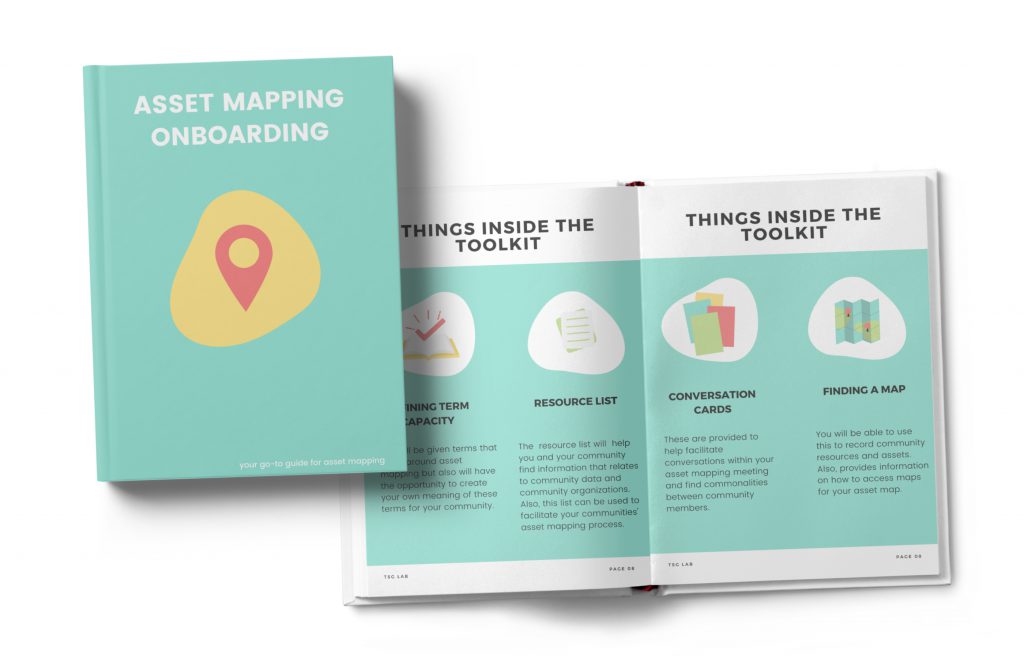
Onboarding Booklet
The onboarding Booklet is designed to guide organizations through the toolkit. It includes information on asset mapping, setting up a community meeting, and is available for individuals to return to at any point during their asset mapping process. The Onboarding Booklet includes:
- Benefits of Asset Mapping for Communities
- Introduction to the Asset Mapping Toolkit
- Defining a Vision for Your Asset Map
- Paper Vs. Digital Mapping
- Creating an Asset Map
- Data Considerations
Conversation Cards
The objective of the conversation cards is to help organization leaders host and facilitate meaningful conversations around their organization’s approach to asset mapping.
The cards are designed to build off of each other in the order of: Ice Breakers, Know Your Community, Community Resources, and Resources in Action. The goal of the cards is to begin to identify assets in a group setting and strategize how communities and organizations can activate identified assets in the future.
Each group of cards includes nine questions, plus an additional blank card for organizations to write their own.
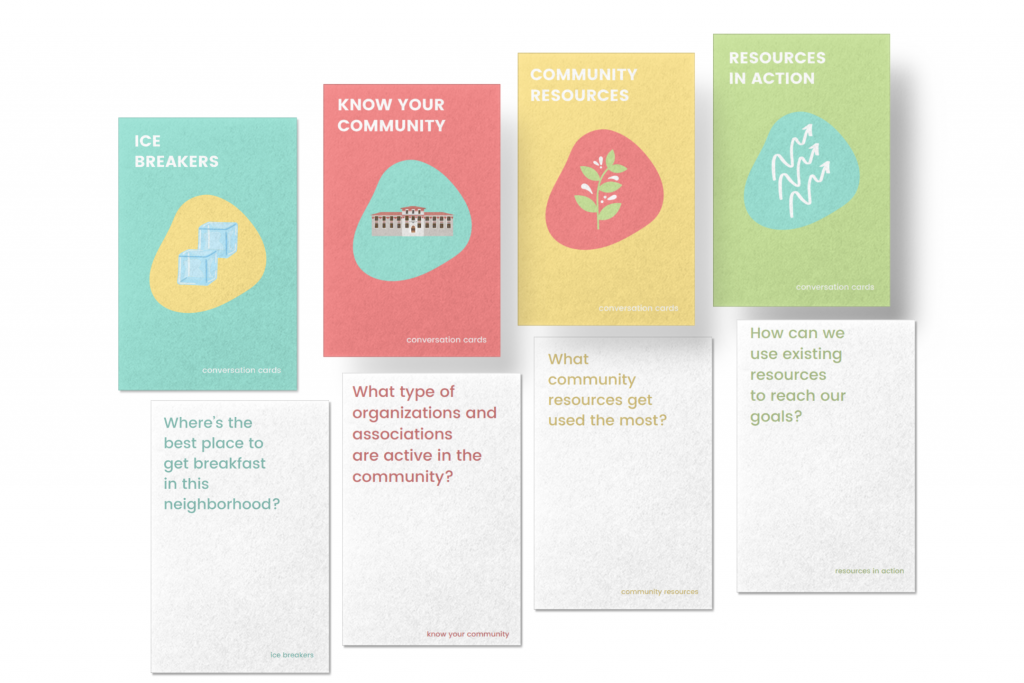

Conversation Cards
The objective of the conversation cards is to help organization leaders host and facilitate meaningful conversations around their organization’s approach to asset mapping.
The cards are designed to build off of each other in the order of: Ice Breakers, Know Your Community, Community Resources, and Resources in Action. The goal of the cards is to begin to identify assets in a group setting and strategize how communities and organizations can activate identified assets in the future.
Each group of cards includes nine questions, plus an additional blank card for organizations to write their own.
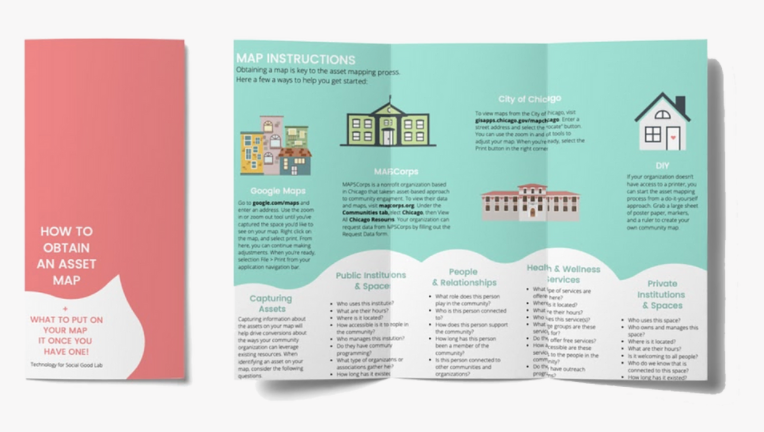
Creating a Map
We learned that having a physical or digital map at the beginning of the asset-mapping process allows organizations to visualize their community and more easily recall and identify its assets.
We also learned that obtaining a map isn’t always an easy task for communities and technological access and skills can often vary. The main objective of the map tool is to provide information on how organizations can obtain a map to get started, including free and DIY approaches.
Secondly, we’ve provided suggestions on the map tool that help guide the asset-identification process. These suggestions ask questions like: How long has the asset existed in the community? Who is able to access this asset? Who does this asset serve?
Defining Terms Activity
We learned early on how important it is for communities and organizations to share a common understanding around key terms and vocabulary, including a shared understanding of what “assets” are and how a community can map them.
The objective of this activity is to allow organization leaders to develop a shared understanding of key terms associated with the asset mapping process.
Each toolkit includes four activity pages that provide a term and a definition followed up with questions like: What would you add to this definition? What would you remove? What would you emphasize? How do you define this term for yourself?
The key terms included in the toolkit are: Community Leader, Community Wealth, Community Asset, and a blank card for organizations to create their own term.
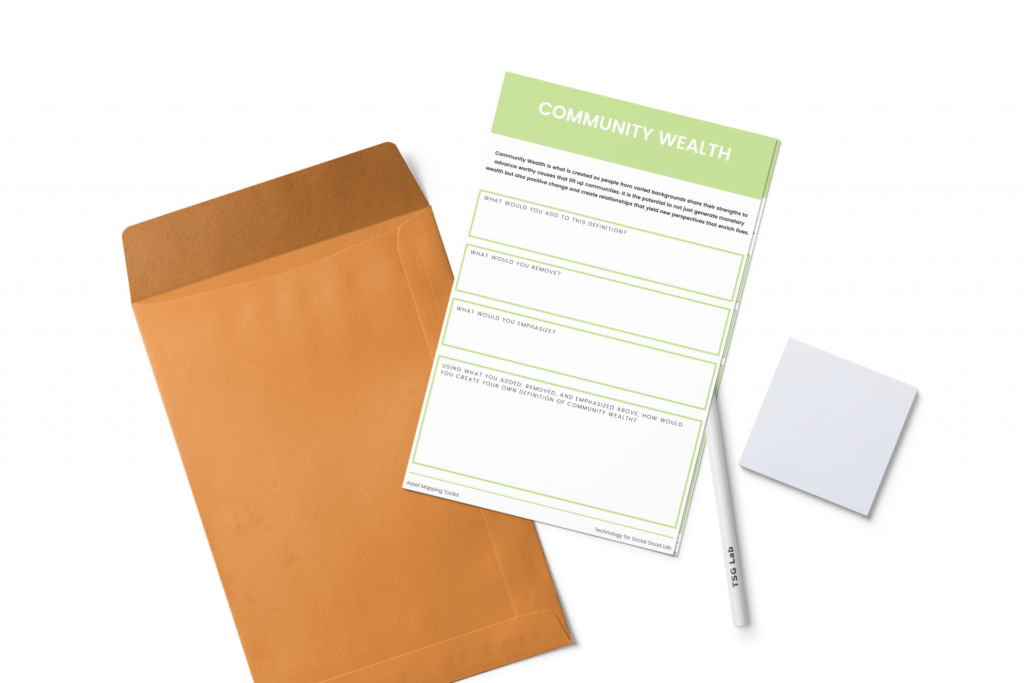

Defining Terms Activity
We learned early on how important it is for communities and organizations to share a common understanding around key terms and vocabulary, including a shared understanding of what “assets” are and how a community can map them.
The objective of this activity is to allow organization leaders to develop a shared understanding of key terms associated with the asset mapping process.
Each toolkit includes four activity pages that provide a term and a definition followed up with questions like: What would you add to this definition? What would you remove? What would you emphasize? How do you define this term for yourself?
The key terms included in the toolkit are: Community Leader, Community Wealth, Community Asset, and a blank card for organizations to create their own term.
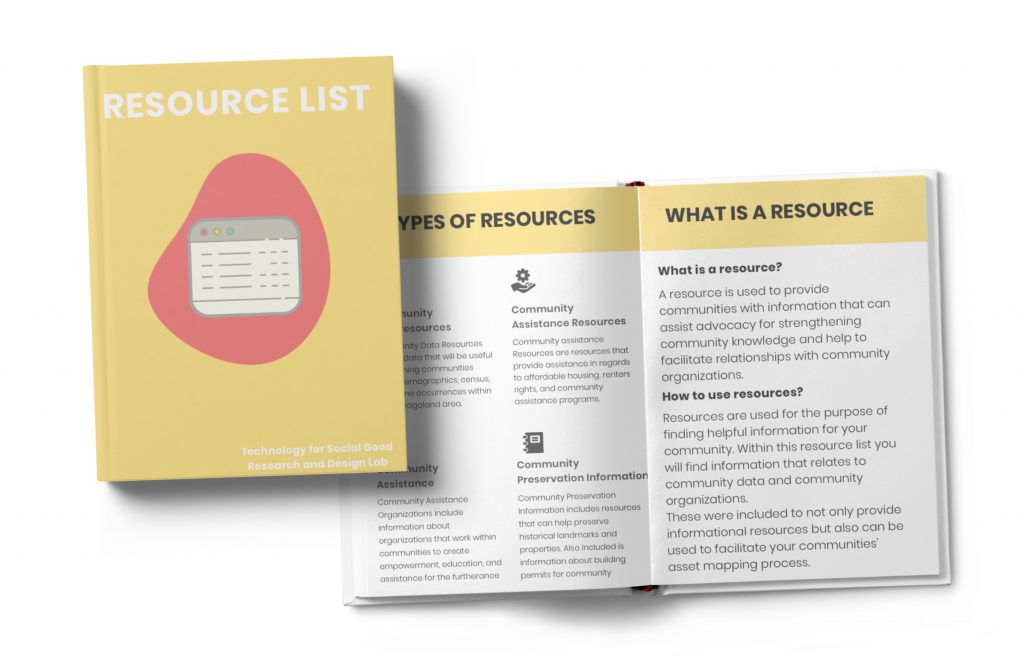
Resources List
The objective of the resource list is to provide community organization leaders with information that can support and help drive community action.
We learned that community organizations are interested in accessing public information like census data and building permits to activate assets and strategize around community building.
In this list of resources, we compile organizations and tools that teach community organizations how to access information and what the information could be used for. For example, a resource may include information on Historical Building Designation and why a community might be interested in this type of information.
At this time, the Resource List is designed for communities in Chicago.




